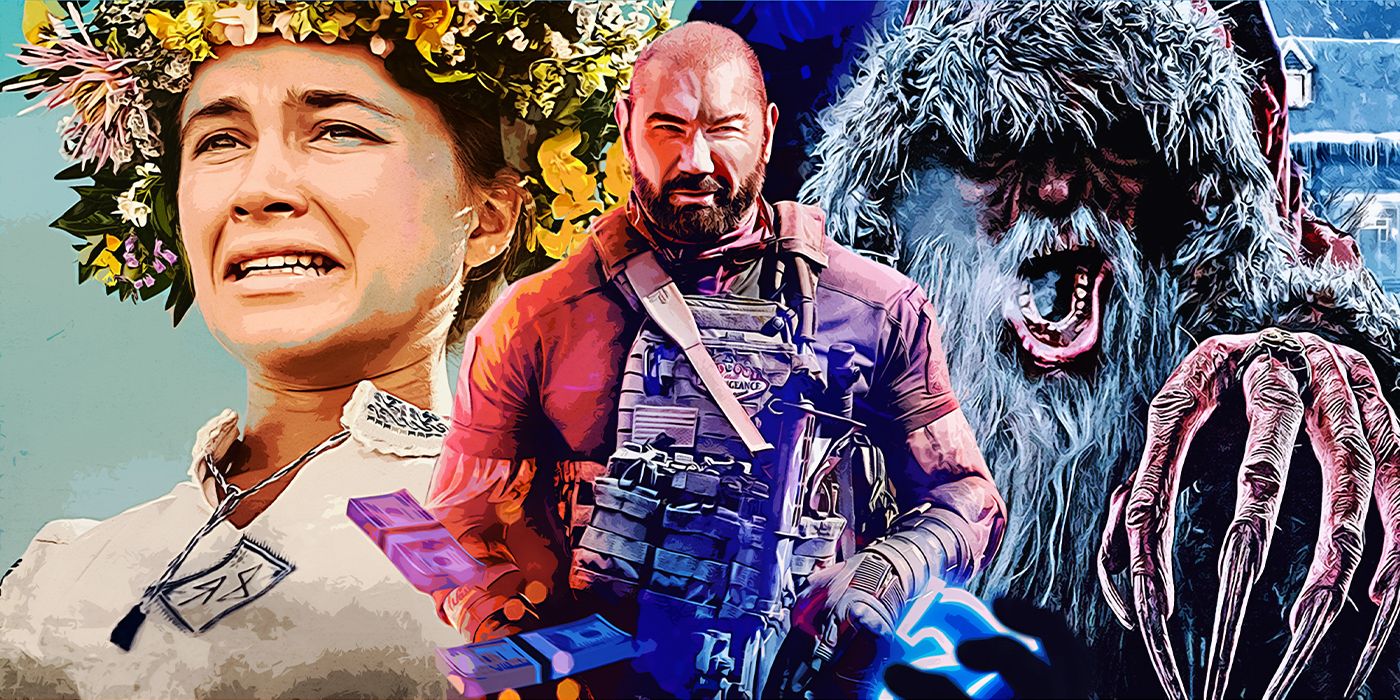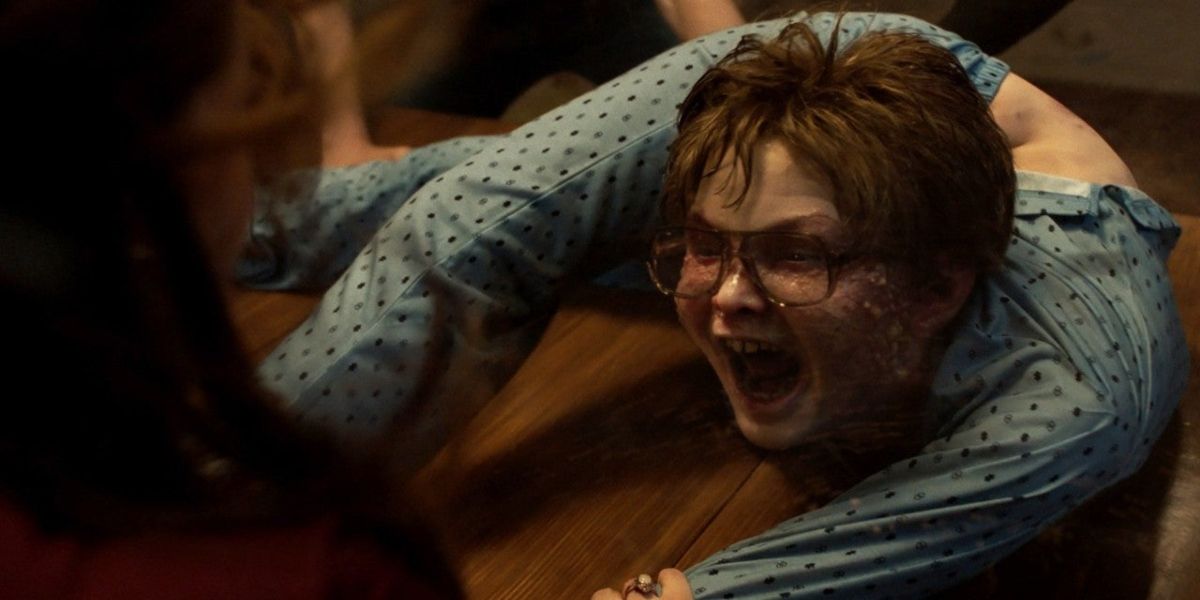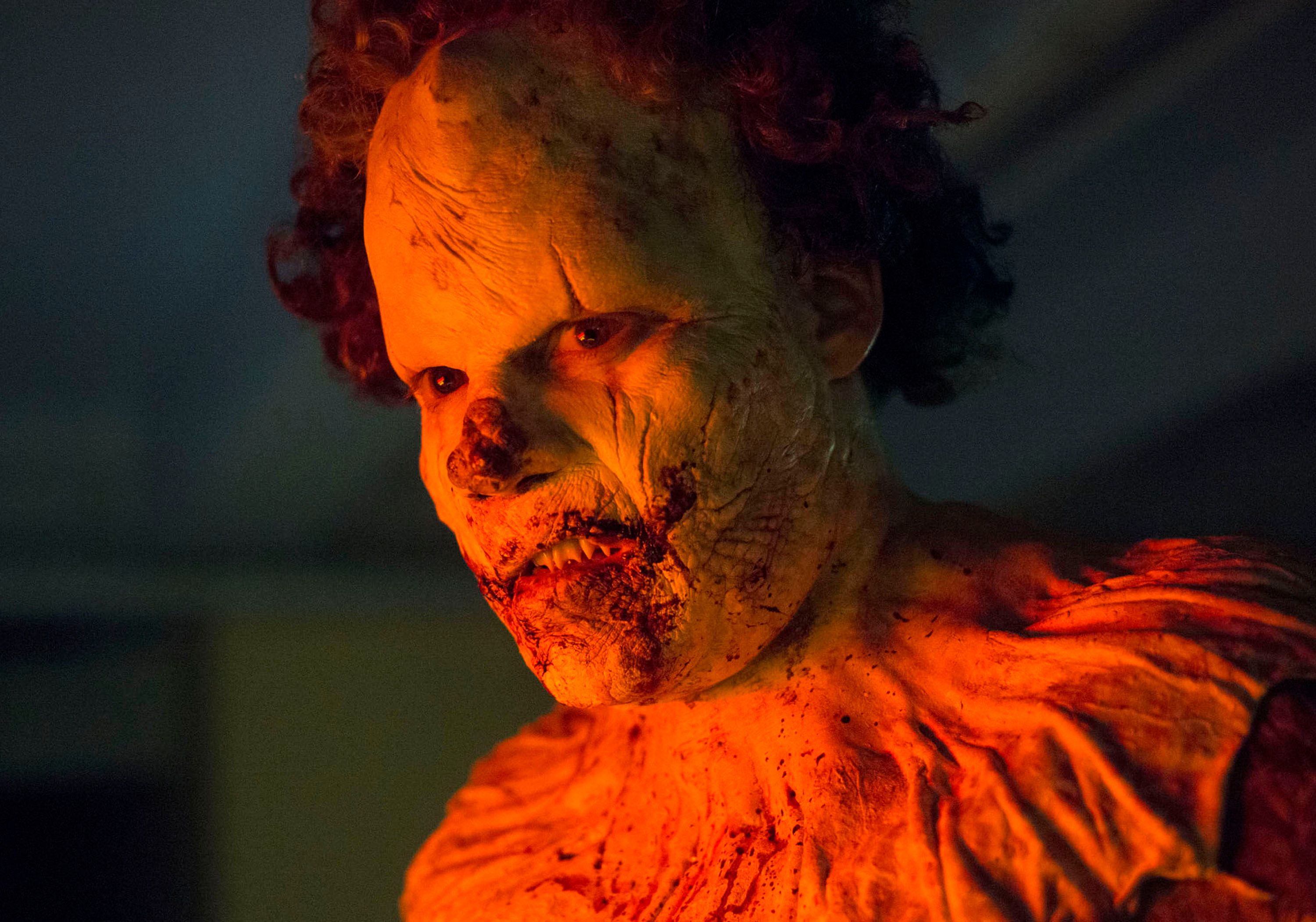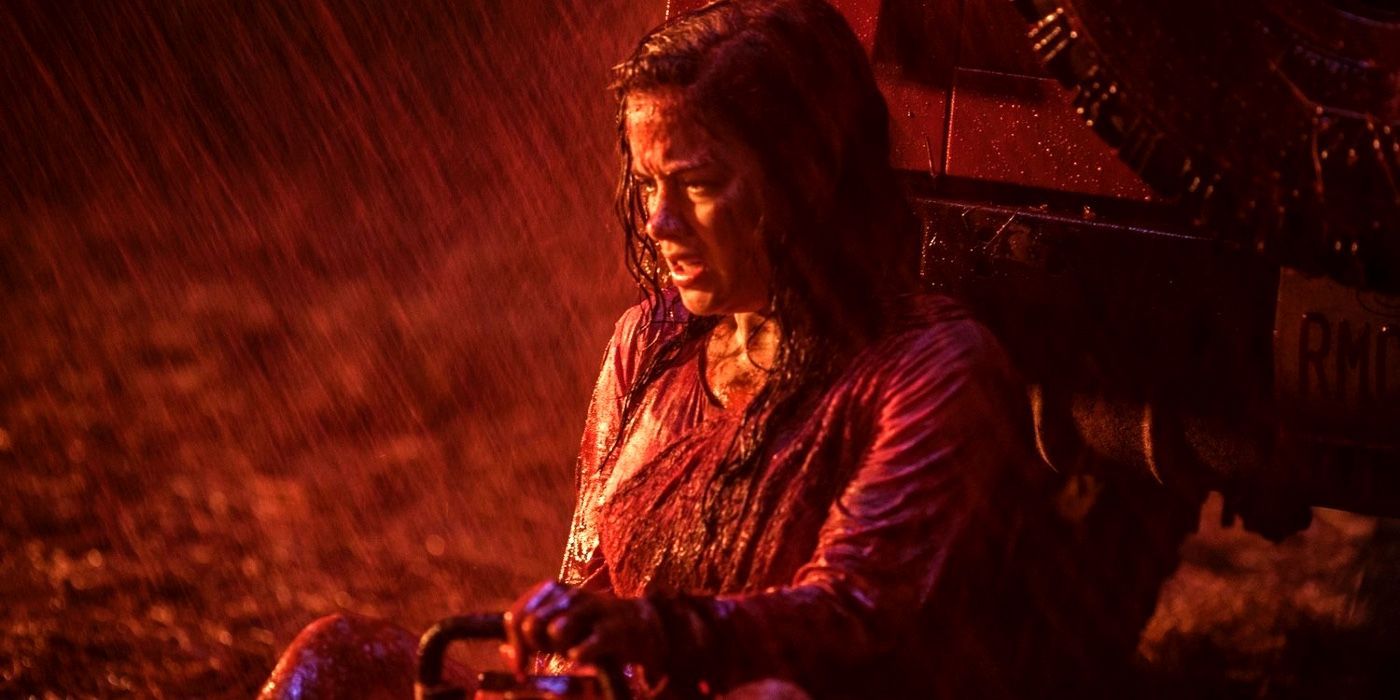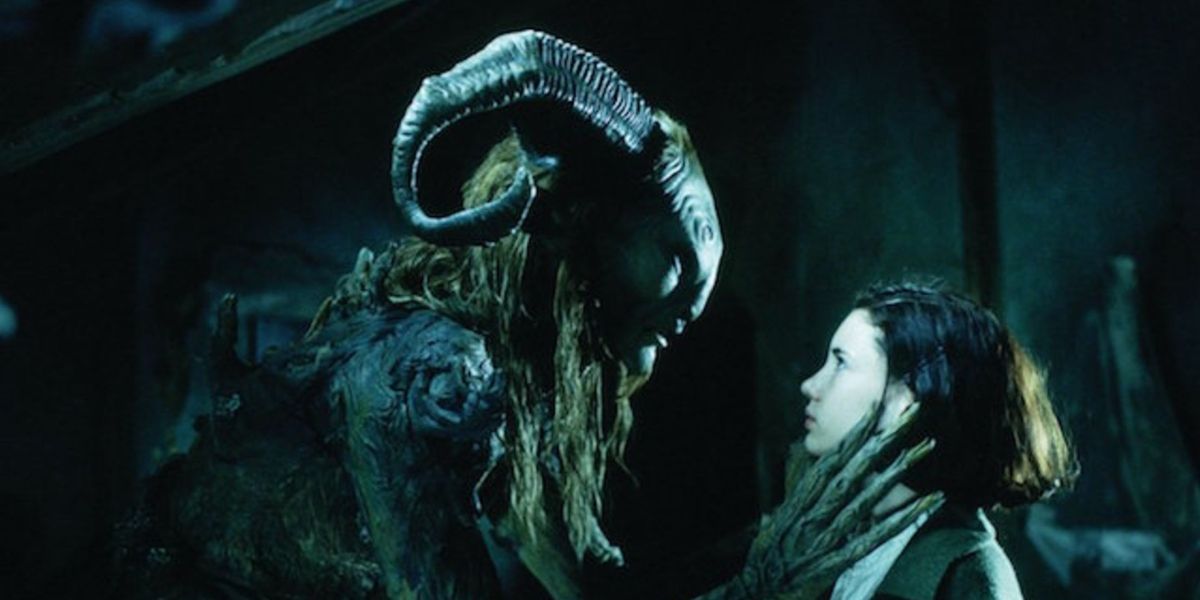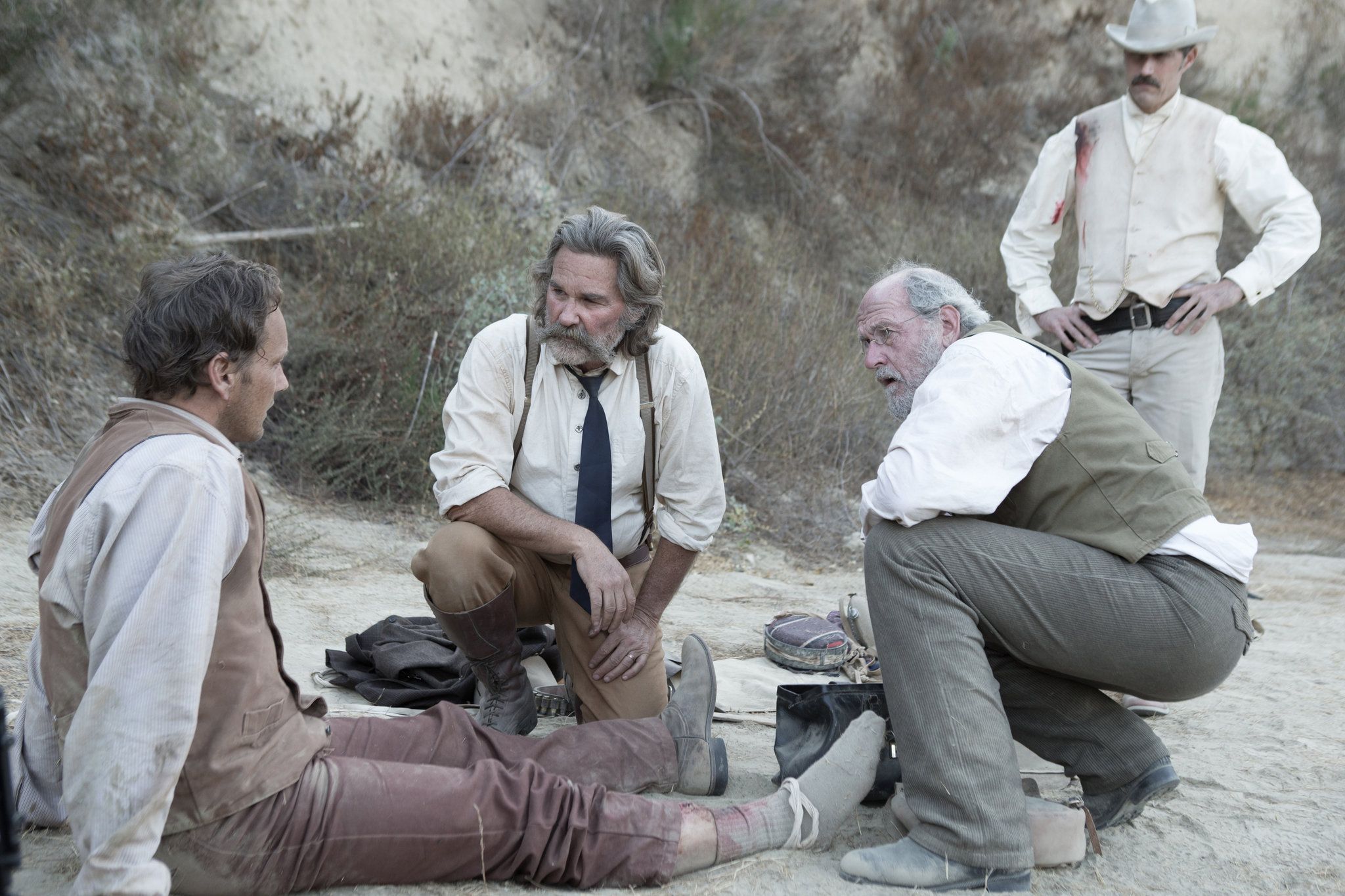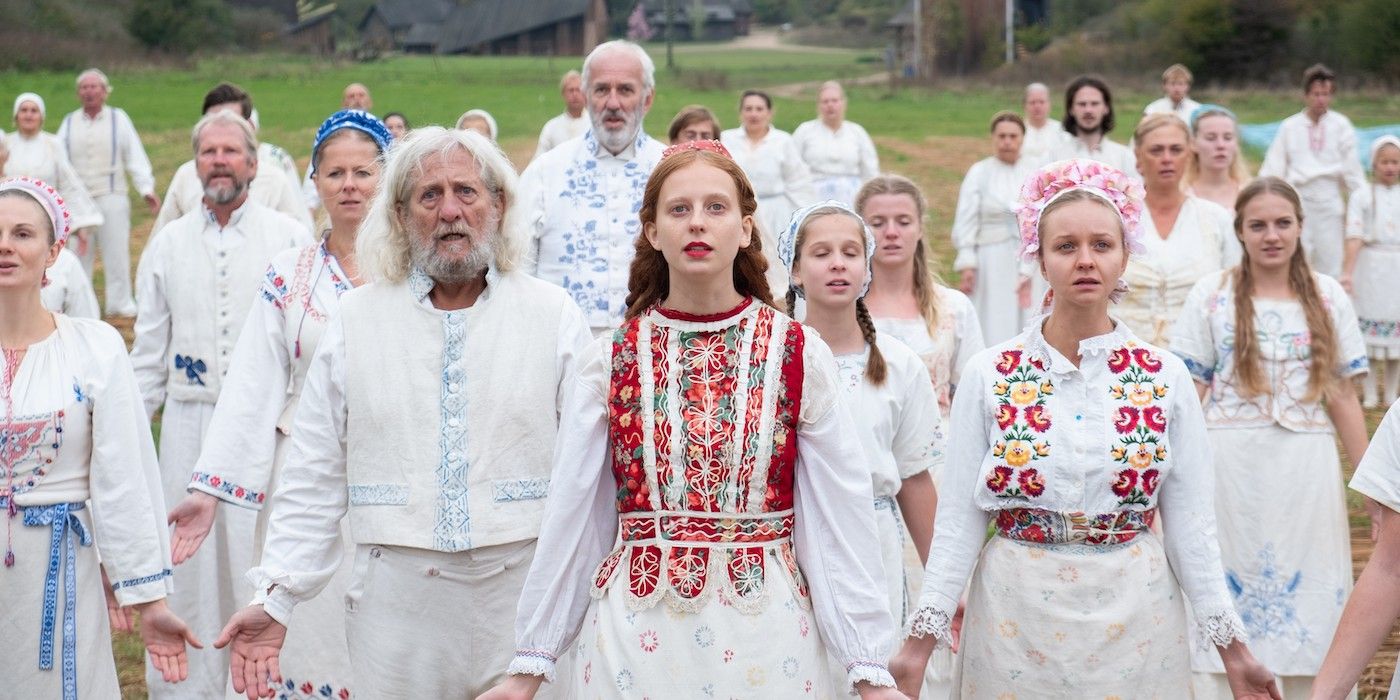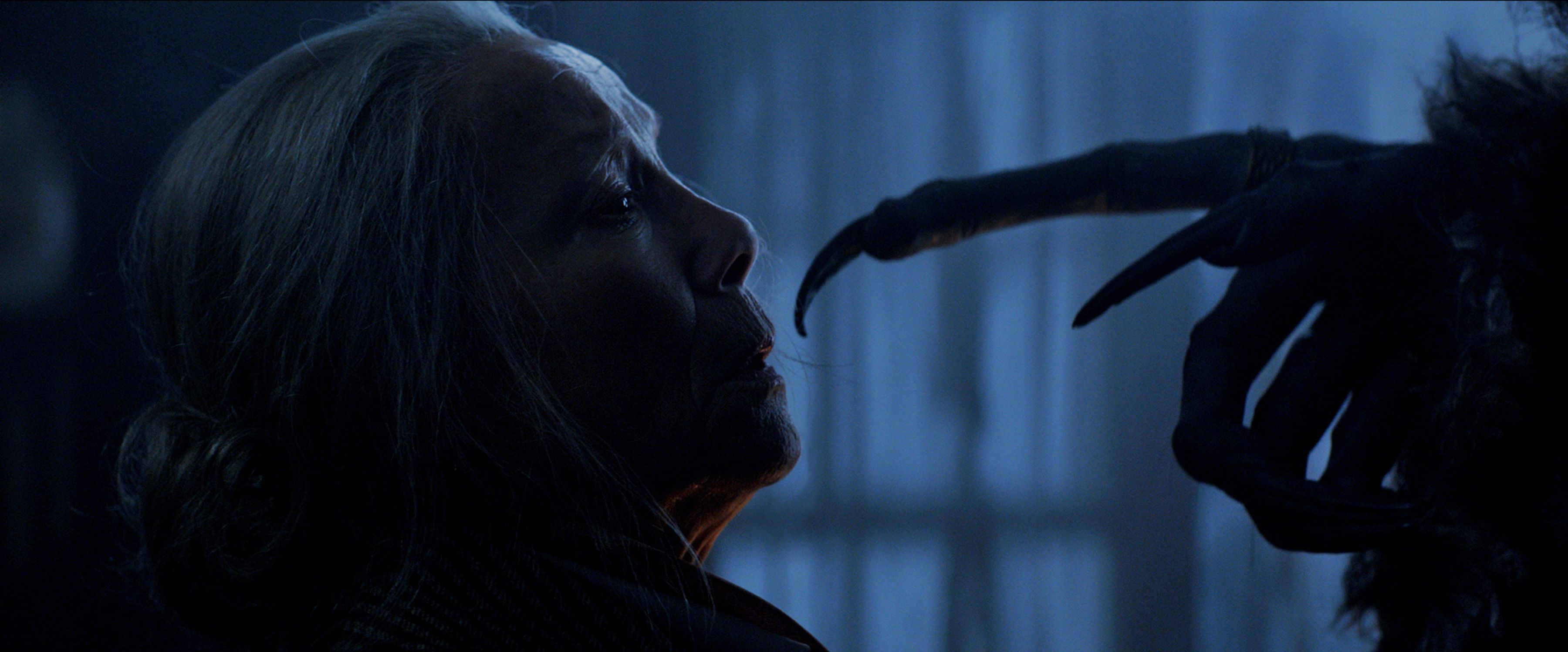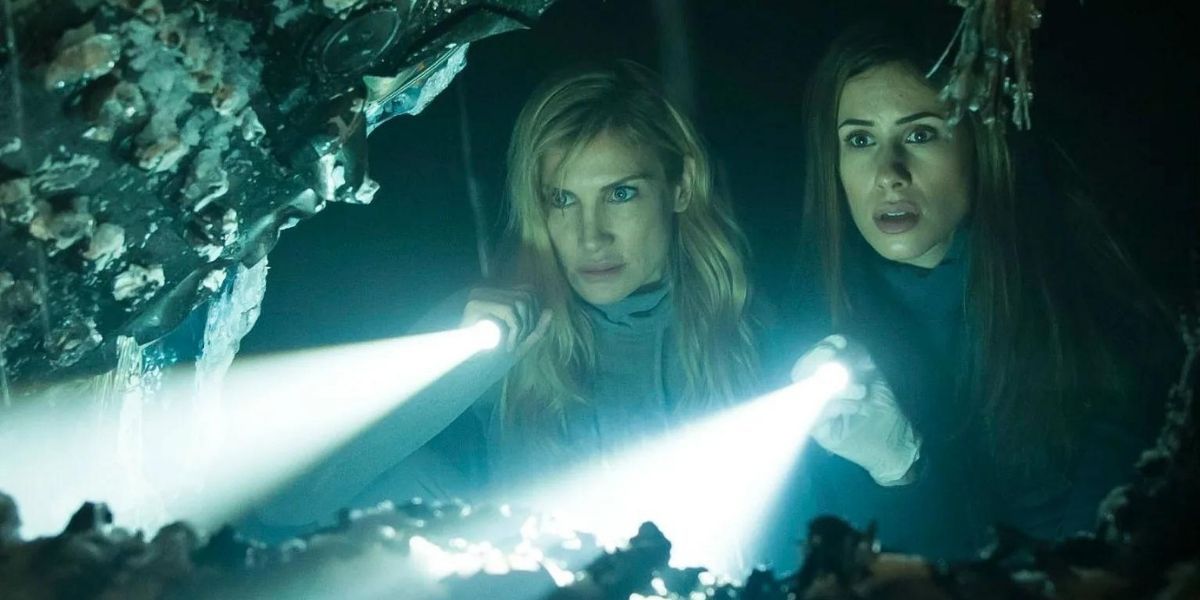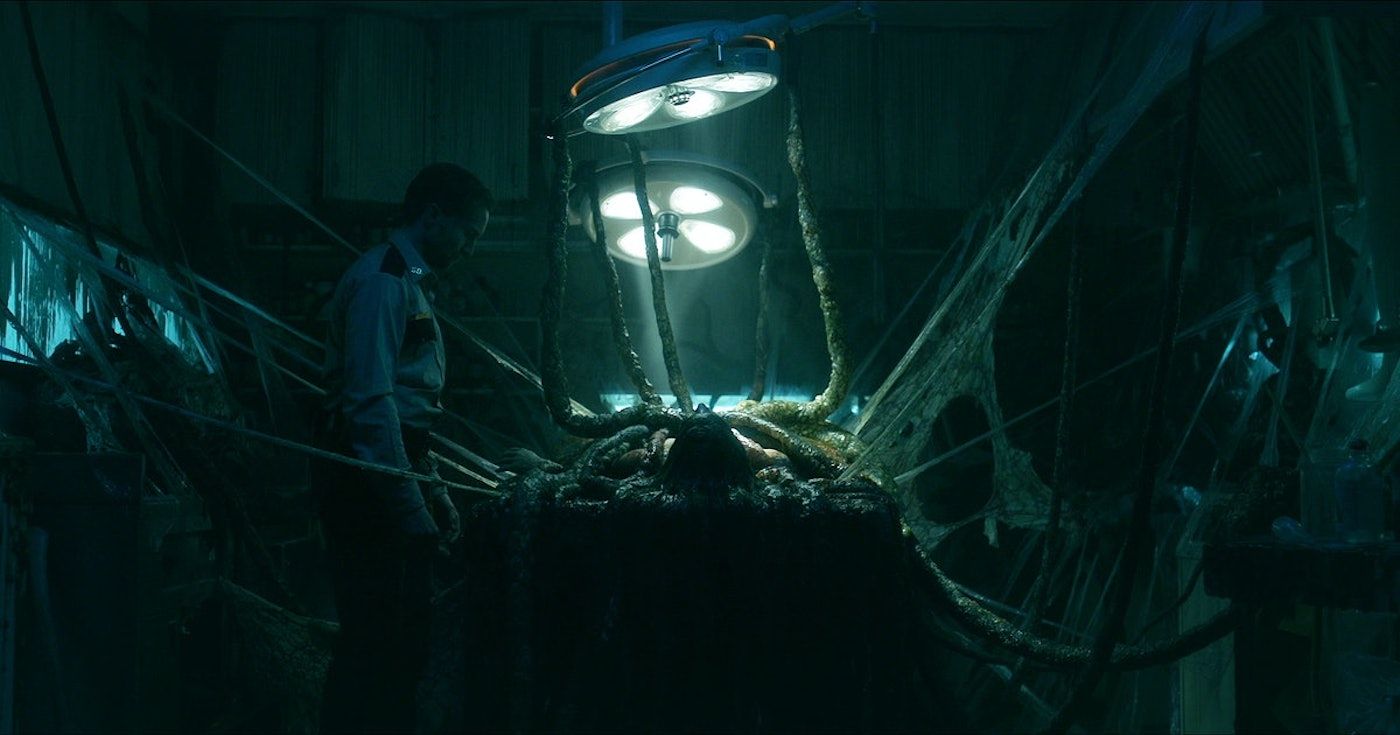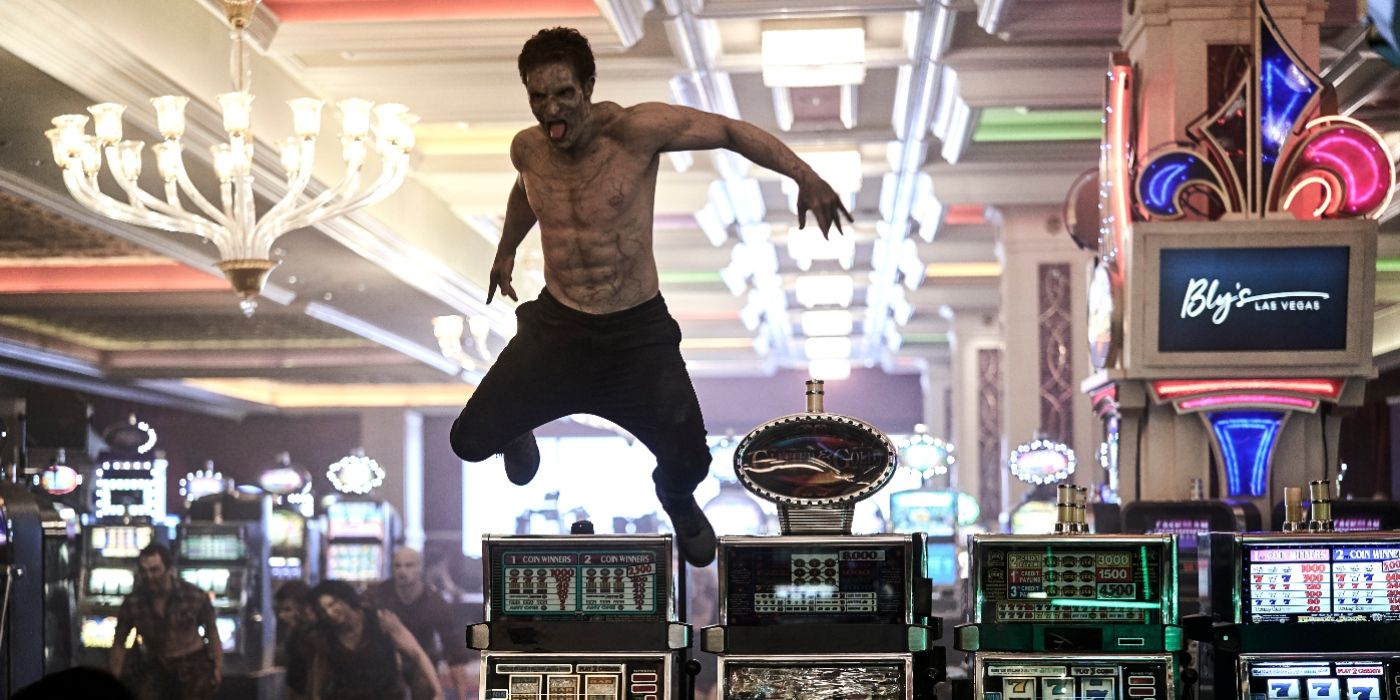As CGI becomes increasingly more advanced and prominent in movies, it’s worth it to take some time to consider all the hard work that goes into making a scene look realistic using practical effects.
While the use of practical effects is not limited to horror movies only, the genre takes the front seat in terms of pioneering some of the most creative usage of practical effects before CGI was readily available (or affordable) to depict grisly and gory scenes. Special effects seen in classics such as The Thing, An American Werewolf in London, or The Fly grossed out audiences, thanks to the hard work of dedicated SFX and makeup artists like Tom Savini and Rob Bottin.
This list will highlight some of the best uses of practical effects in more contemporary films when CGI just couldn’t cut it.
The Conjuring III: The Devil Made Me Do It (2021)
Following the storyline of famous paranormal investigators Ed (Patrick Wilson) and Lorraine (Vera Farmiga) Warren, we are transported back to 1981 as the two of them investigate a murder that may be linked to a demonic possession. During a scene involving an exorcism of 8-year-old David Glatzel (Julian Hilliard) the boy contorts his body into a seemingly humanly impossible position.
But it actually was a human performing that stunt. Contortionist Emerald Gordon Wulf made her first appearance as a stunt performer in a major motion picture as she served as a body double for young David. Using no wires or sped-up footage, the only use of CGI for that scene was to superimpose Julian Hilliard’s face onto Wulf’s.
Clown (2014)
Produced by “Master of Terror,” Eli Roth and directed by Marvel veteran Jon Watts, this movie is not meant for any viewers with extreme coulrophobia (aka the fear of clowns).
After a last minute cancellation, realtor Kent (Andy Powers) finds an old clown suit in the basement of a house he is selling and steps up as the entertainment for his son’s birthday party. He soon realizes he is unable to remove the costume as it begins to fuse to his body and change his behavior. Any attempts to remove the wig, the nose, or the costume itself result in injury as he slowly transforms into a terrifying clown.
Regardless of the far-fetched plot, there’s no way this movie could have been visually convincing without heavy utilization of practical visual effects professionals Jagdeep Khoza and Tony Gardner. Gardner owns the makeup and special effects company, Alterian Inc and has worked on other prominent horror films such as Zombieland and Seed of Chucky.
Evil Dead (2013)
A group of young adults meet up at a remote cabin in the middle of the woods as an intervention with the intent to help Mia (Jane Levy) through a hard and much-needed detox. They find a leather book in the cellar and of course, read from it (“Kunda…”) which ends up summoning the Evil Dead. After this, Mia is possessed by a demonic entity, but her friends write off her increasingly erratic behavior as withdrawal symptoms.
According to director Fede Alvarez, no CGI was used in this movie, which is incredible considering some of the more intense and graphic images, such as the scene where Mia slices her tongue with a razor. Evil Dead apparently used 70,000 gallons of fake blood throughout the movie, 50,000 of which went to the end scene. The original movie from 1981 (which only used 300-500 gallons of fake blood) is renowned for its use of practical effects, and the production crew wanted to keep that edge.
Pan’s Labyrinth (2006)
Any Guillermo Del Toro film would be more than welcome on this list, but Pan’s Labyrinth deserves recognition for its stunning make-up and visual effects.
Set in 1944 Spain, the movie is a fantasy thriller following Ophelia (Ivana Baquero), a young girl forced to move onto a military compound because of her mother’s relationship with the ruthless Captain Vidal. She is convinced that there is still magic in the world so when she is approached by a Faun (Doug Jones) and told that she is actually a princess of the Underworld who was lost when she ventured too far into the human realm, she fully believes him. He gives her a set of tasks to complete, to prove that she is in fact Princess Moanna, before she can return to her kingdom.
Doug Jones, who also portrayed major characters in Del Toro’s The Shape of Water and Hellboy, spent five hours a day getting makeup and prosthetics applied for his elaborate Faun costume. In addition to playing the Faun, he also portrayed the terrifying “pale man,” a creature with an insatiable appetite for children. He took this time to learn how to speak Spanish, so that he could recite his own lines instead of just repeating the phonetic pronunciations.
Bone Tomahawk (2015)
Anybody who has already seen this movie knows exactly why it’s on this list.
Bone Tomahawk is a western horror movie set in the 1890s. Pitting settlers against an antagonistic Native American tribe known for cannibalism. While there are many examples of practical effects used throughout the film, the most iconic and disturbing scene is the one where Sheriff Hunt (Kurt Russell) and other captives witness the brutal bisection of Deputy Nick (Evan Jonigkeit) by the titular weapon. Filmed as though audiences are watching through Hunt’s own eyes, the visual effects as well as the sound design make this scene absolutely unforgettable and harrowing.
Writer and director S. Craig Zahler holds nothing back for audience imagination in the last third of the movie. Filmed in 21 days with a budget of merely $1.8 million, he had to make use of practical effects, which paid off greatly in the end result.
Midsommar (2019)
Ari Aster shocked audiences in 2018 with his feature directorial debut, Hereditary and followed up with his solid delivery of Scandinavian folk-horror film, Midsommar in 2019.
In the opening scenes, Dani (Florence Pugh) is traumatized from the suicide of her younger sister, which also resulted in the deaths of their parents. She is left with no one except for her boyfriend, Christian (Jack Reynor), who was planning on breaking up with her just before the devastating incident. She is inadvertently invited to join him and his friends on a trip to Sweden on a cultural anthropology study of the celebration known as the Hårga, which only happens every 90 years.
The practical effects come into play when the group of outsiders witnesses a ceremony known as the “Ättestupa.” During this ceremony, two elderly members of the commune willingly jump off a cliff and fall to their death. As we see, if they do not die upon impact the other members will have to take matters into their own hands. Members of the commune approach a gravely injured man and “assist him” by crushing his skull with a large wooden mallet.
Iván Pohárnok, the prosthetic makeup designer shows his abilities throughout the 12 graphic deaths in the film. On a rushed schedule, due to having to finish filming during the summer months, he was able to provide some of the most gruesome deaths/corpses for this Swedish horror flick.
Krampus (2015)
In this dark comedy holiday horror film we are introduced to Krampus, the creature of German Folklore who is said to be the “shadow of Saint Nicholas.” During Christmas-time, Krampus is known to punish and steal children who “lose their Christmas spirit.”
Starring Adam Scott, Toni Collette, Emjay Anthony, David Koechner, and other well-known faces, this movie takes the concept of a holiday stuck with the in-laws to another fantastical level. Some effects, like the homicidal gingerbread cookies, were CGI, but a large portion of the distorted Christmas creatures were created by the use of animatronics and prosthetics, most notably the titular character, Krampus.
During an interview with movie blog Film School Rejects, director Mike Dougherty (Trick’r Treat, 2008) stated: “I love practical [effects], but I understand why a lot of filmmakers have abandoned it and gone digital, because with practical, you move 10 times slower. I think the effect is worth it.”
Harbinger Down (2015)
If you ask a group of horror fanatics what they think is the most iconic use of practical effects, 9 out of 10 times, John Carpenter’s The Thing (1982) will come up in that conversation. Harbinger Down is a direct homage to that film.
Harbinger Down is set in 2015 and is about two biology graduate students and their professor investigating the effects of global warming in the same spot that a Soviet moon lander had crashed back in 1982. After discovering the lander coated in ice, the team brings it to the surface where it begins to melt, releasing shape-shifting alien creatures.
Directed by Alec Gillis and produced by Tom Woodruff Jr. (both of whom are founders for the special effects company StudioADI), Harbinger Down heavily utilizes practical effects to create this modern-day homage to one of the most iconic horror films.
The Void (2016)
The Void is a Lovecraftian-style horror film that follows young police officer Daniel Carter (Aaron Poole) who finds an injured man along a rural road. He takes him to the nearest hospital, which is severely understaffed due to a recent fire and then faces some unexpected and horrifying experiences.
This movie is chock-full of grotesque creatures that can only be done well with practical effects. The haunting images will disturb any horror fan’s sleep schedule, as they utilize special effect techniques that are best known from genre classics like The Fly and The Thing.
Army of the Dead (2021)
Zack Snyder has been making a splash lately with his movies such as 300 (2006), Watchmen (2009), and Zack Snyder's Justice League (2021). He is no stranger to zombie flicks as he also directed the 2004 remake of Dawn of the Dead.
In Army of the Dead, he does use CGI for certain aspects, such as a zombie tiger that assaults the protagonists, but he also made the decision to spend time and money on making the “zombie horse,” which is ridden by the leader of the zombies, a practical effect.
That’s right, the zombie horse is not CGI. It was a real live horse that was fitted with makeup and appliances to make it appear as a “zombified” horse. It’s one thing to subject a knowing human actor to 4+ hours of special effects makeup and prosthetic appliance; but a live animal? Filmed in the scorching heat of New Mexico, time was of the essence to apply the horse’s prosthetics, then film, and finally remove the prosthetics and cool the horse between shots.
Next time you watch a horror film, pay close attention to if the special effects are computer-generated, or if they are “real.”

